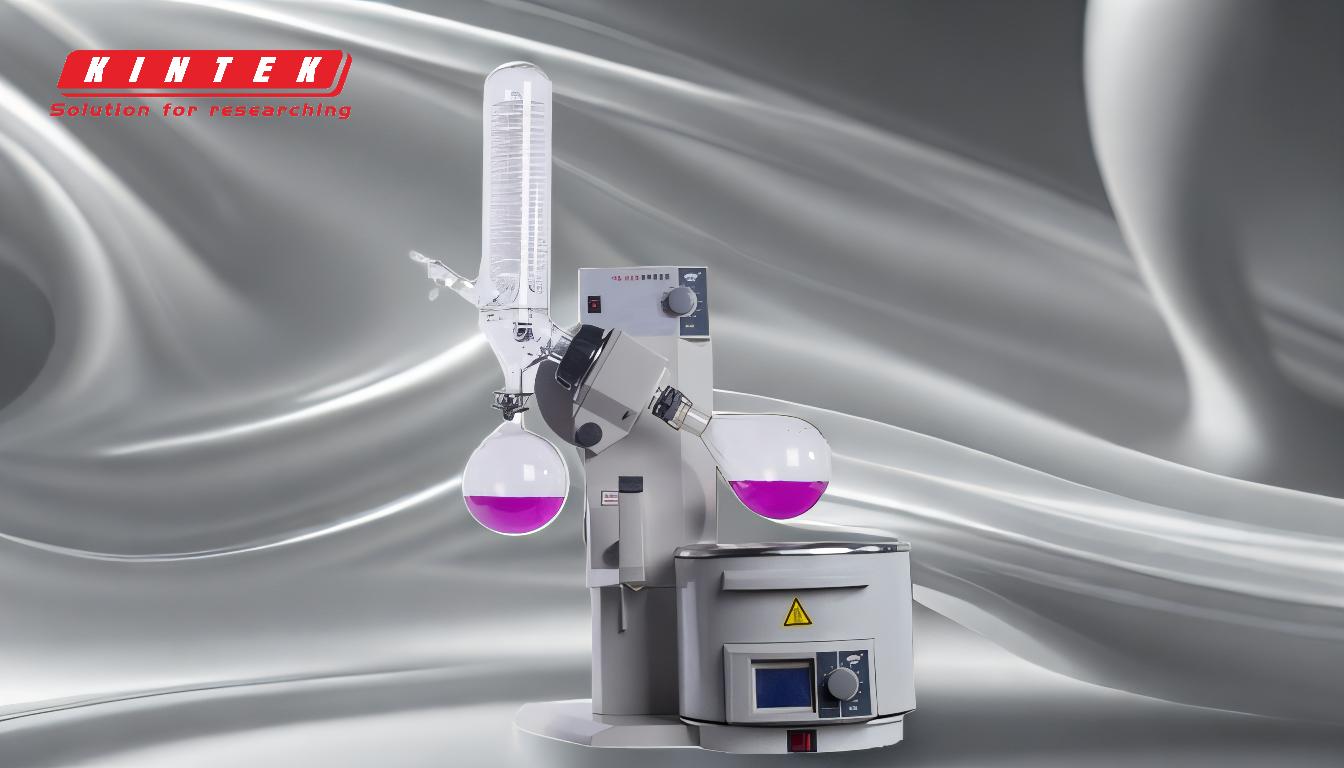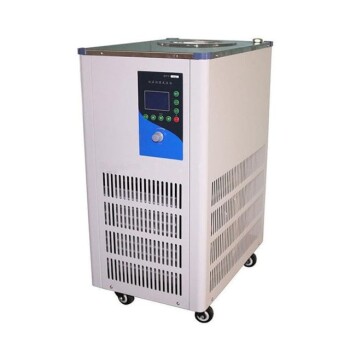Efficiency in evaporators, particularly rotary evaporators, is influenced by a combination of factors that optimize heat transfer, evaporation rates, and system performance. These factors include the circulation of the liquid, viscosity changes, vacuum degree, rotation speed, heating bath temperature, cooling medium temperature, and the quality of components like vacuum pumps and sealing materials. Precise control over these variables ensures efficient distillation while protecting heat-sensitive samples. Below, the key factors are explained in detail to provide a comprehensive understanding of how to maximize evaporator efficiency.
Key Points Explained:

-
Liquid Circulation and Viscosity
- Efficient liquid circulation is critical for maintaining high evaporation rates. Poor circulation, often caused by increasing viscosity as the liquid evaporates, reduces heat transfer coefficients and slows down the process.
- To mitigate this, ensure the liquid is well-mixed and consider using additives or adjusting the viscosity of the solution to maintain optimal flow.
-
Vacuum Degree and System Tightness
- The vacuum degree directly impacts distillation efficiency. A higher vacuum lowers the boiling point of the solvent, enabling faster evaporation at lower temperatures.
- System tightness is crucial to maintain the vacuum. Use high-quality sealing rings (e.g., PTFE for better wear and corrosion resistance) and ensure vacuum tubes and connections are leak-free.
- Balance the vacuum level with the equipment's pressure resistance to avoid damage.
-
Rotation Speed of the Flask
- The rotation speed of the evaporation flask affects the surface area of the liquid exposed to heat, which influences evaporation rates.
- Optimal rotation speeds ensure uniform heating and prevent localized overheating, which is especially important for heat-sensitive samples.
- Adjust the speed based on the solvent type and sample characteristics.
-
Heating Bath Temperature
- The temperature of the heating bath must be carefully controlled to provide sufficient heat for evaporation without degrading the sample.
- Higher temperatures increase evaporation rates but may risk damaging heat-sensitive materials. Use a balance between temperature and vacuum to achieve efficient distillation.
-
Cooling Medium Temperature
- The condenser's cooling medium temperature is critical for efficient solvent recovery. Lower temperatures improve condensation efficiency, reducing solvent loss and increasing overall system performance.
- Ensure the cooling system is adequately sized and maintained for consistent performance.
-
Condenser Efficiency
- The design and efficiency of the condenser play a significant role in recovering evaporated solvents. High-performance condensers with sufficient surface area and cooling capacity enhance distillation efficiency.
- Choose condensers based on the solvent type and evaporation rate requirements.
-
Component Quality and Material Selection
- High-quality components, such as vacuum pumps, sealing rings, and vacuum tubes, contribute to system reliability and efficiency.
- Materials like PTFE offer superior durability and resistance to wear and corrosion compared to rubber, ensuring long-term performance and reduced maintenance.
-
Solvent Type and Properties
- The type of solvent being evaporated affects the evaporation rate. Solvents with lower boiling points evaporate faster under vacuum, while higher viscosity solvents may require adjustments to rotation speed and heating.
- Consider the solvent's thermal stability and compatibility with the evaporator materials.
-
System Design and Size
- The size of the rotary evaporator and the flask should match the volume of the sample. Oversized or undersized equipment can lead to inefficiencies.
- Ensure the system is designed to handle the specific requirements of the application, including heat transfer and vacuum capabilities.
-
Precision Control and Monitoring
- Precise control over rotation speed, vacuum degree, heating bath temperature, and cooling medium temperature is essential for optimizing efficiency.
- Use advanced control systems to monitor and adjust these parameters in real-time, ensuring consistent performance and protecting sensitive samples.
By addressing these factors systematically, users can significantly enhance the efficiency of their evaporators, achieving faster distillation rates, improved solvent recovery, and better protection of heat-sensitive materials.
Summary Table:
| Factor | Impact on Efficiency |
|---|---|
| Liquid Circulation & Viscosity | Ensures high evaporation rates; poor circulation slows heat transfer. |
| Vacuum Degree & Tightness | Higher vacuum lowers boiling points; tight seals maintain vacuum integrity. |
| Rotation Speed | Affects liquid surface area; optimal speed ensures uniform heating. |
| Heating Bath Temperature | Must balance heat for evaporation with sample protection. |
| Cooling Medium Temperature | Lower temperatures improve condensation efficiency and solvent recovery. |
| Condenser Efficiency | High-performance condensers enhance solvent recovery. |
| Component Quality | Durable materials like PTFE improve reliability and reduce maintenance. |
| Solvent Type & Properties | Lower boiling points and viscosity adjustments optimize evaporation rates. |
| System Design & Size | Proper sizing ensures efficient heat transfer and vacuum capabilities. |
| Precision Control & Monitoring | Real-time adjustments optimize performance and protect sensitive samples. |
Maximize your rotary evaporator's efficiency—contact our experts today for tailored solutions!



















